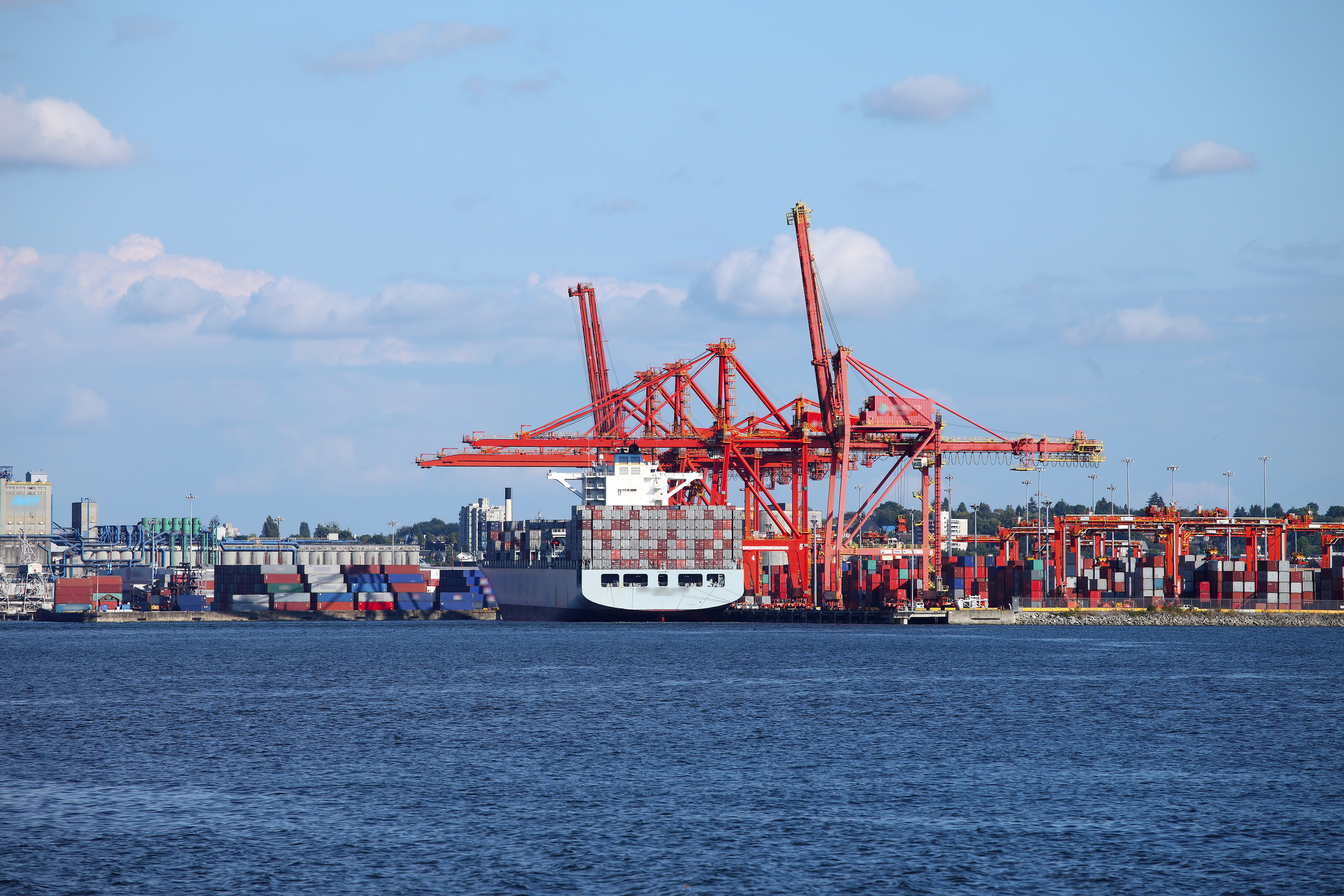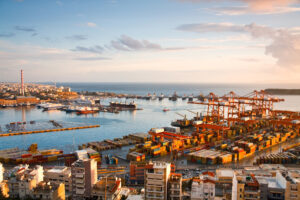Canada’s largest port moved record volumes of Canadian trade in the first six months of 2025, supporting Canada and Canadians during global uncertainty.
The Port of Vancouver moved more than 85 million metric tonnes of cargo in the first half of 2025, delivering vast quantities of made-in-Canada grain, energy and fertilizer exports to diverse world markets, the Vancouver Fraser Port Authority reported on Sept. 26.
The port’s mid-year cargo statistics show a 13% increase in cargo moved between January and June 2025, compared to the same six-month period last year.
Terminals handled nearly 20% more international trade than a year ago, thanks to increased exports of Canadian crude, canola oil, grain, potash and coal to international markets.
Containerized trade remained steady, while cruise and auto volumes eased following record performances in 2024.
“Canadians and their businesses depend on the Port of Vancouver to buy and sell the products they manufacture, farm, mine and stock their shelves with,” said Peter Xotta, president and CEO of the Vancouver Fraser Port Authority.
“As Canadians navigate a moment in time like no other, I want to acknowledge the port community and our supply chain partners for rising to the occasion and moving record trade volumes so far this year. The Port of Vancouver has a critical role to play in meeting the moment as Canadian businesses seek to sell more of their products to more customers outside of the U.S.”
The port connects Canada with more than 170 global economies, whilst more than 80% of the trade through the port of Vancouver is Canadian trade with countries other than the U.S.
Bulk exports of Canadian commodities were strong in the first half of the year, including record volumes of crude oil exports, and robust volumes of canola oil, grain and potash exports from Manitoba, Saskatchewan and Alberta.
Crude oil exports surged by 365% to almost 12 MMT, with Trans Mountain’s expanded pipeline and terminal coming into operation in May 2024. Approximately 60% of these record volumes went to China, while other markets including the U.S., South Korea, Singapore and Japan all surpassed their full-year 2024 volumes early in the first half of 2025.
Canola oil exports were up 72% to 0.7 MMT, in the first six months of 2025, as the port connected Canadian producers with new overseas markets and helped offset lower U.S. and Chinese demand.
Export markets for canola oil grown throughout Western Canada expanded from four in 2024 (China, U.S., South Korea, Peru) to 12 in the first half of 2025, with new and returning markets including Belgium, Malaysia and Mexico.
Port operators also moved near record volumes of bulk exports of Canadian grain, fertilizer (potash, sulphur) and coal. Grain was up 8% to reach its second highest half year on volumes on record (behind 2021), including wheat up 16% and canola seed up 12%.
Increased volumes of canola seed went to Japan, while new markets such as Mexico, Netherlands, France, Bangladesh, Bulgaria helped offset the impact of Chinese tariffs.
Potash was up 26% to reach its second highest half-year result on record after 2019 as the fertilizer product recovered from a slowdown in 2024, while sulphur was up 5% and coal down 2%.
The Port of Vancouver’s four container terminals moved 1.88 million 20-foot equivalent units (or TEUs) at mid-2025, with mid-year volume growth of 6% driven largely by Canadian trade. It was the second highest volume of containers moved at mid-year, after 2021’s record of 1.94 million TEU.
“Containerized trade – like the Canadian economy – has shown remarkable strength and resilience so far this year in the face of U.S. tariffs and global uncertainty,” said Xotta.



